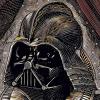The Reader
Everything in the World, With Notes
The late Theodore Sturgeon, a science fiction writer of no small talent, posited something that has become known as Sturgeon’s Law, which says, “Ninety percent of everything is shit,” including the fields in which he worked and the people who worked in those fields. For supposedly the smartest of the fiction genres, science fiction and fantasy are especially rife with terrible, even painful writing and populated by characters who seem to be defined solely by their highly improbable names (I’m looking at you, Caiaphas Cain and Owen Deathstalker). The rest of the genres are equally barren over nine-tenths of their territories, clouds of dust being thrown up by cat detectives and hordes of zombies and bare-chested Highlanders who only want to be loved.
The reason for this is simple. Too often genre fiction is written by itinerant fans of those genres, obsessive types who have absorbed so much undiluted spellcasting or bodice-ripping that they have to create those worlds themselves, but the only tools they’ve given themselves are the very books in which they’ve been immersed. The results are the same as with inbreeding, ever paler and more inferior imitations of that which has gone before. The first suggestion offered to every budding writer anywhere is to read widely, expand one’s toolbox, fill one’s cupboard with as many different materials and experiences as possible. Nature only thrives on synthesis—if you want to build something new, you have to throw in new stuff by the shovel-load—and it’s only the pioneers and innovators who are remembered.
There is no finer exemplar of this than Neil Gaiman, who may safely be called one of the premier fantasists of our time. Anthologized relentlessly, as comfortable winning the Newbery Award for children’s literature as he is taking the World Fantasy Award for his adult work, the subject of a cult following usually reserved for rock stars and evangelists, Gaiman made his bones as a writer of comic books, most notably The Sandman: a throwaway title about a throwaway character that Gaiman managed to leverage into what many people who have no business saying it out loud call the best comic ever written. In 75 issues, Gaiman spun an elaborate postmodern fable about seven siblings who are the personifications of cosmic abstractions—death and desire, dreams and destiny—and wove it into a tapestry of adventure, metaphysics, romance and the nature of Man and his need for stories. Gaiman actually wrote the novel of ideas that every writer aspires to write and, perversely, did it as a freaking comic book.
Gaiman’s secret? He read and read and read, absorbing knowledge and ideas from a mind-boggling array of different sources and synthesizing them into a comprehensive world-view. The Sandman drew from obscure myth, Jungian symbolism, esoteric science, pop culture, Eastern and Western philosophy, and an aptitude for wry humor and brain-shredding horror to become a comic about which academics write papers while their kids paw through them with sweating upper lips, confident in the steady blowing of their minds.
In case you haven’t figured it out by now, I love The Sandman. I love it like I love very few things in this world I’m not married or related to. So, I’m thrilled beyond belief at the appearance of The Annotated Sandman, Volume I (DC/Vertigo, 2012), the first volume of a set of table-sized books devoted to reprinting every issue of Gaiman’s comic and providing notes and insight on a page-by-page basis. All of Gaiman’s sources and the references he tossed around like some English metaphysical Johnny Appleseed are carefully collected and laid out in the margins by Leslie S. Klinger, who has annotated Dracula and the entire Sherlock Holmes canon. Not that such annotation was ever necessary to enjoy the comic—Gaiman was always that good at his job—but seeing just how the ideas geysered from his brain onto the panel and pages is nothing short of wondrous.
The first volume collects issues 1-20 and pays them lavish attention, drawing from Klinger’s researches, Gaiman’s original scripts and conversations with Gaiman. The result is a pocket education in myth, Shakespeare, science and medicine, cosmology, the history of comics and every other one of Gaiman’s obsessions, lessons in how to create one of the most extraordinary comics ever. The issues are reprinted in black-and-white, which is a shame because much of the various art teams’ subtle uses of color are lost. It’s just as well, however, as the volume’s cost could well have shot up from the $50 list price it carries, with the total cost topping at least $200 before Klinger is done.
As it stands, however, that’s not too hard a price to pay for what you get, an attractive book with definite heft, both in weight and content, a prestige edition befitting its cargo. It’s well worth the cost to own this and the future volumes, and fans of Gaiman’s work are guaranteed to squee. Sturgeon’s Law need not apply to The Annotated Sandman; Gaiman’s comic and this book are firmly in the 10 percent.












comments